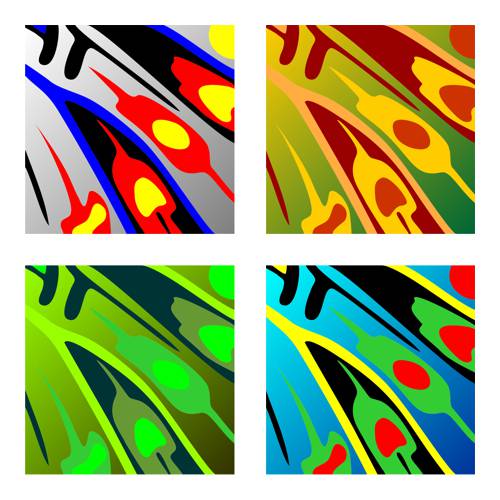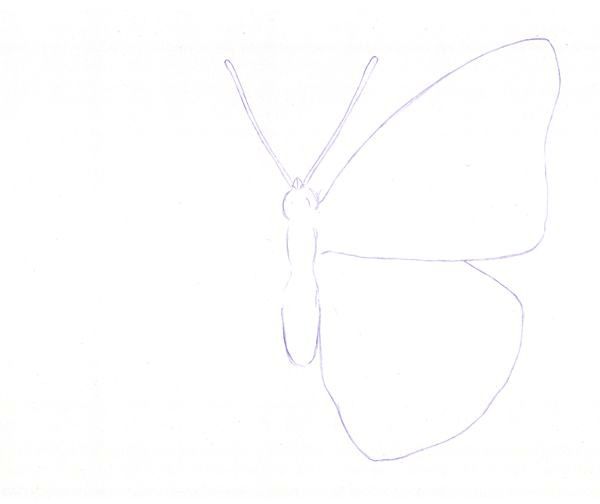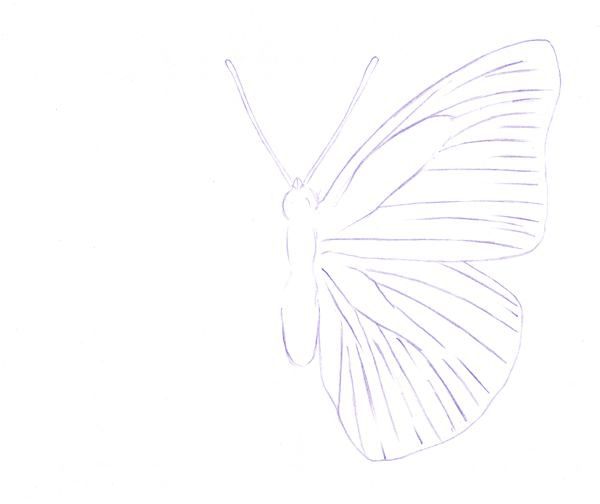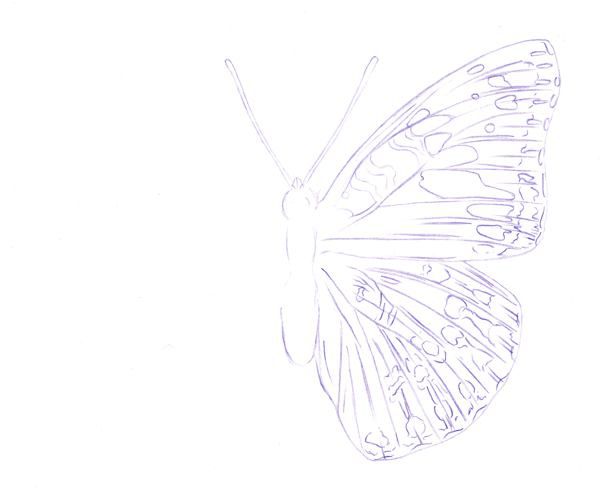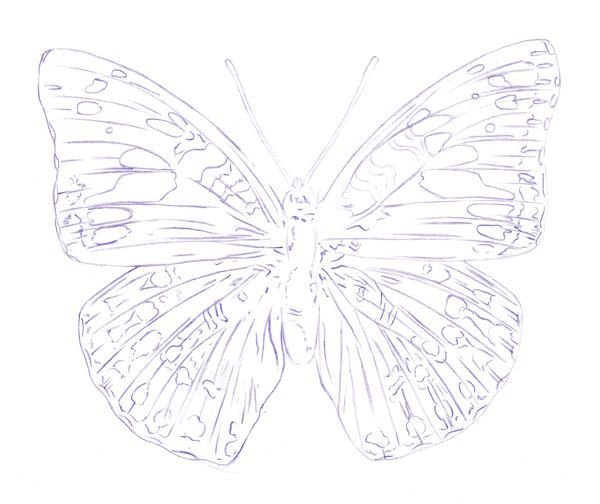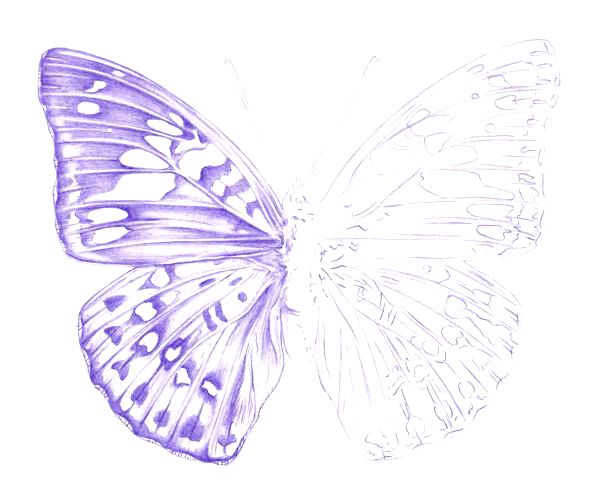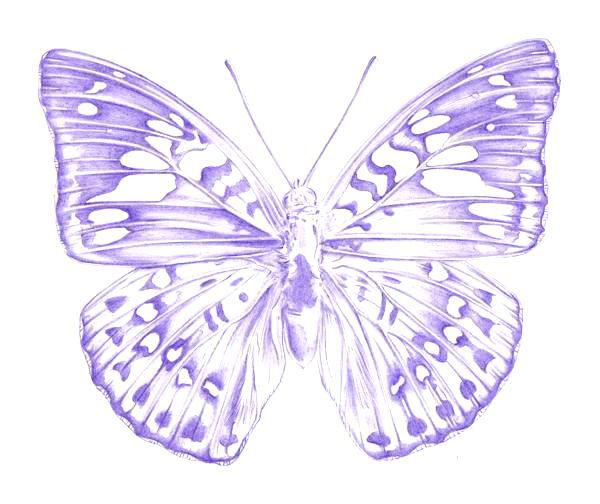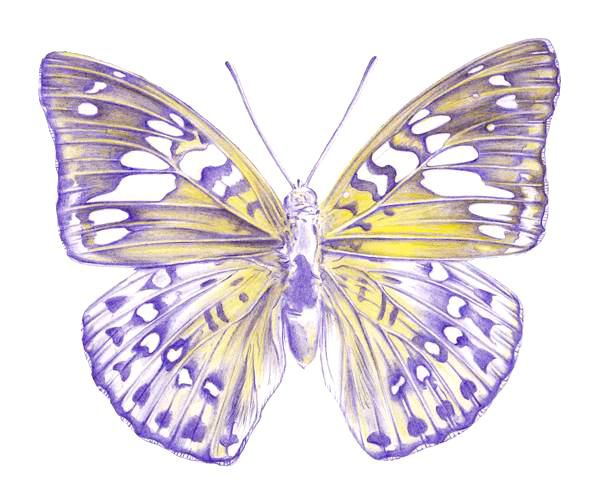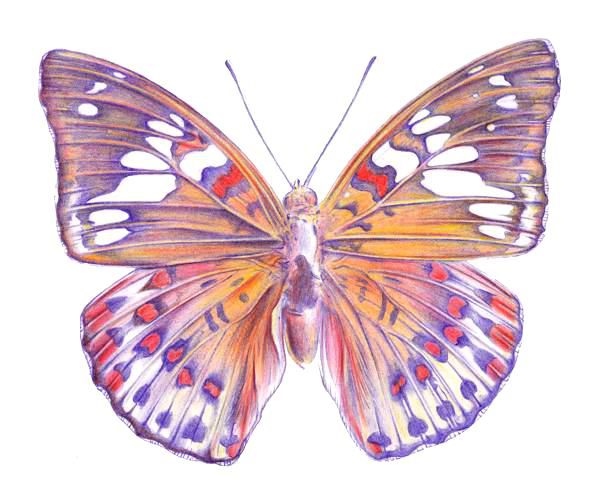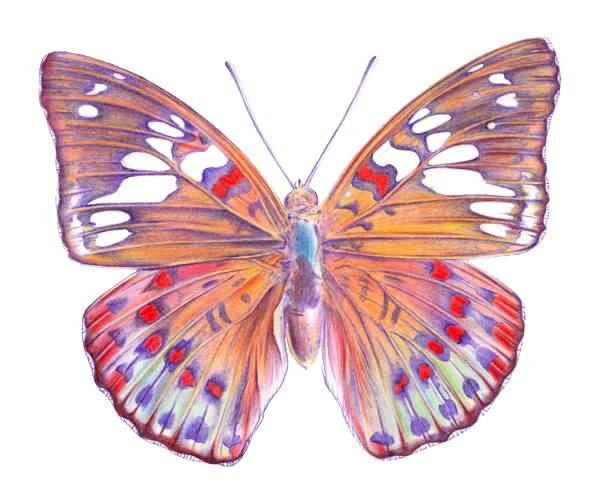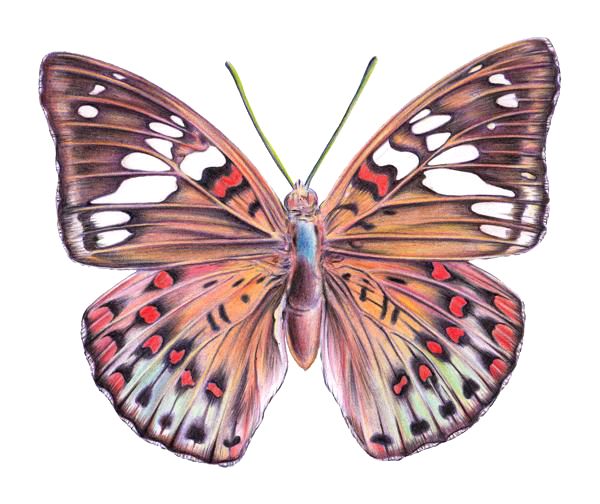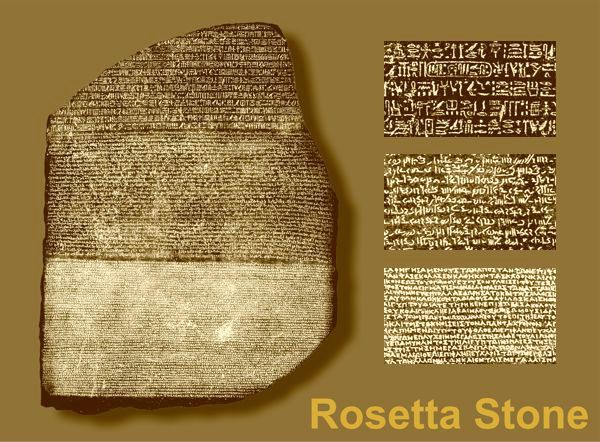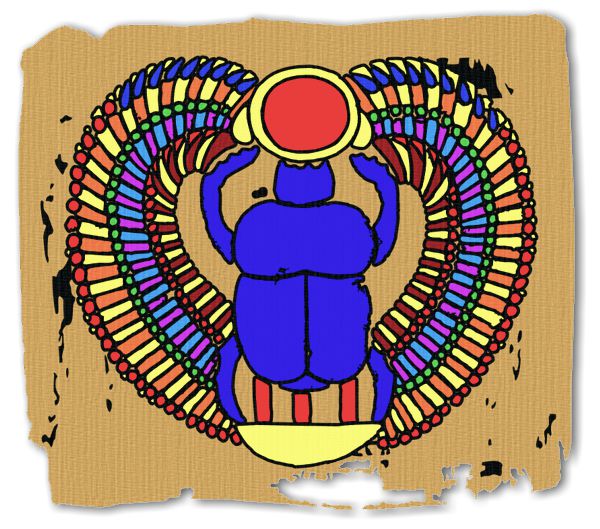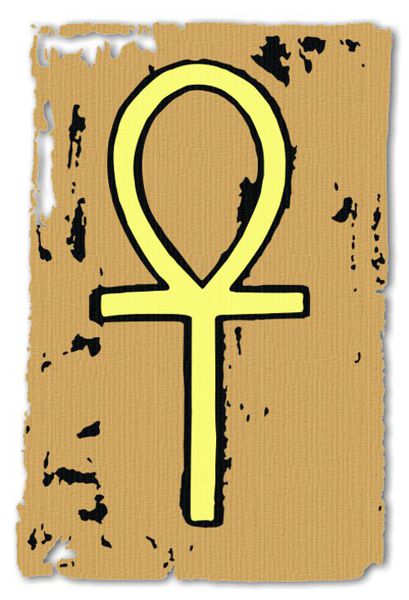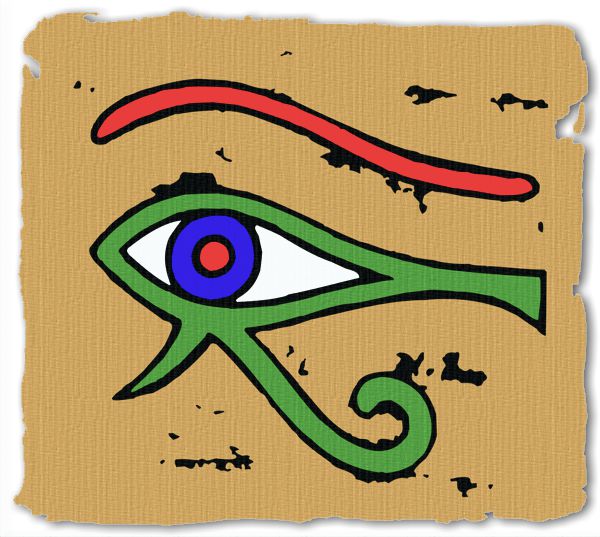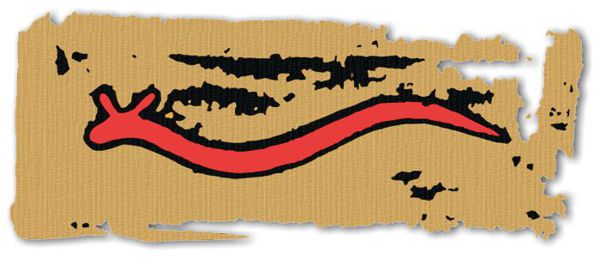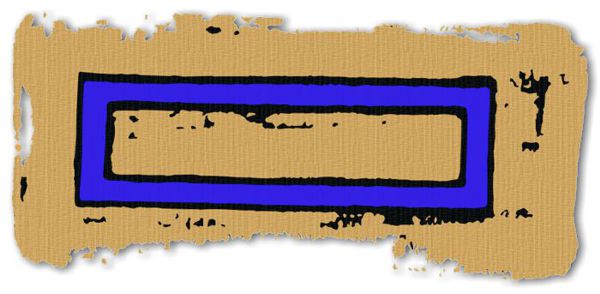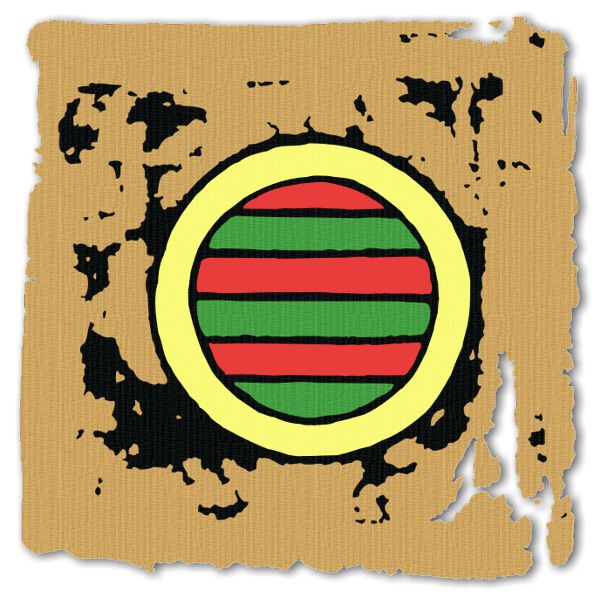DESIGNING A TILE UNIT INSPIRED BY NATURE
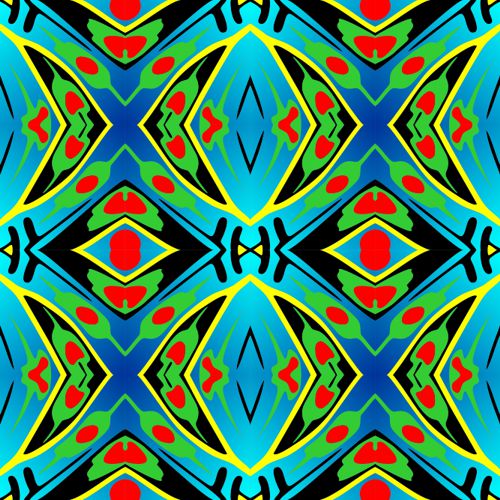
A repeat pattern based on the wing of a butterfly.
This lesson on repeat patterns teaches you how to design a tile unit for a 'mirror repeat' pattern using a drawing from nature to inspire your design.
NOTE: Throughout this lesson we use the term 'tile' to describe the unit that will be duplicated to create a repeat pattern. Although you can use any rectangular shape for your tile we recommend that you use a square as this is the most regular shape to repeat.
STEP 1 - USE NATURE AS YOUR INSPIRATION
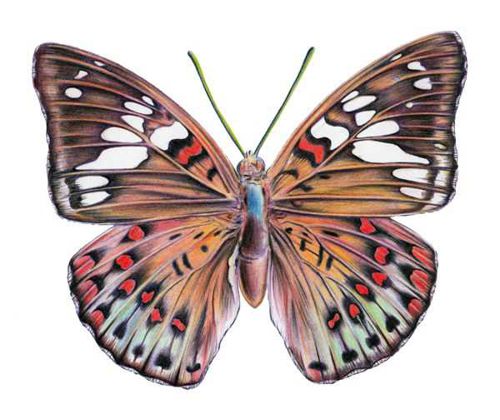
Images drawn from nature often provide the best inspiration.
Although it is possible to use any image, many artists and designers look to the patterns and forms that already exist in nature for their inspiration. Objects such as leaves, flowers, shells and insects are excellent for this practice as they already have an abundant variety of natural patterns and forms.
NOTE: Drawing from nature is a good way to create your source image because you discover natural patterns that you would never have invented for yourself.
For our source image we have used the color pencil study from our Butterfly Drawing Lessonwhich is the ideal preparation for this project.
STEP 2 - SELECT A SQUARE SECTION OF YOUR DRAWING
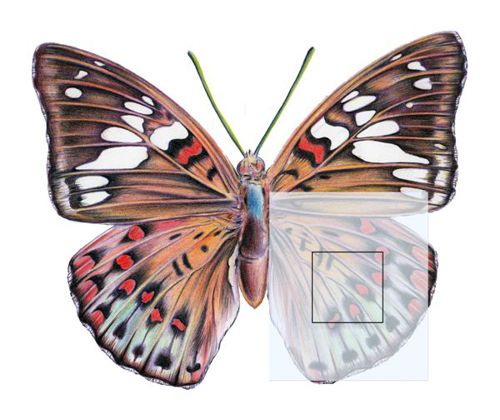
Select a section from your drawing that you find visually interesting.
Once you have prepared your source image you should select a square section of it to become the inspiration for your tile unit. We chose a square section as this is the simplest shape to repeat.
TECHNIQUE: Draw a square on a sheet of tracing paper. You can use this as a frame to select an interesting area from your source image. This is done by moving the square over the image until you find a section that is visually appealing.
NOTE: The size that you draw the square will become the size of your tile unit. Around 6cm. to 8cm. is a useful size to use.
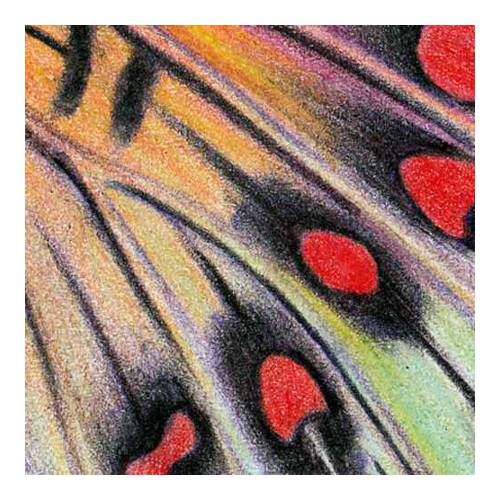
A close-up of the section from our drawing that was selected as the inspiration for our tile unit.
As the inspiration for our tile unit, we chose an area of the butterfly's wing that creates a diagonal movement of lines and shapes across the image. Diagonal arrangements on square tiles seem to form the most dynamic designs. They work better than horizontal or vertical arrangements as the tile already contains these elements in its horizontal and vertical edges.
STEP 3 - SIMPLIFY YOUR DESIGN INTO LINES AND SHAPES

A simplified tracing of the tile unit.
After choosing a section for your tile, take the sheet of tracing paper and using a soft grade pencil (grade B or 2B) trace a simplified outline of its main shapes inside the square. This will become the basic design for your tile unit which you may then develop by applying tone and color.
STEP 4 - DEVELOP YOUR DESIGN WITH TONE AND COLOR
Explore the effects of tone and color on a development sheet
To develop your tile design, 'trace and transfer' the image several times onto an A4 sheet of paper using a layout like our illustration above. You can then explore the different effects of tone and color upon your design until you begin to discover certain combinations that appeal to you more than others.
NOTE: You can click here for a blank A4 template of our development sheet that you may print and use.
TRACE AND TRANSFER TECHNIQUE: Take the traced outline of your tile and draw carefully over the image on the back of your tracing paper so that you have the same image pencilled on both sides. Now place your tracing onto a sheet of paper and draw over the lines of your design to transfer the image. Use a soft grade pencil (grade B or 2B) as this will transfer more easily.
MEDIA: The best media to choose for this project if you are creating your image by hand are color pencils, paint or even collage. You could also complete the project digitally using imaging software such as Photoshop, Illustrator or CorelDraw.
STEP 5 - SELECT YOUR BEST DESIGN

The final tile unit for our repeat pattern
Finally, from your development sheet select one design that appeals to you more than the others. This is your chosen 'tile unit' that you can now repeat to construct your pattern as illustrated in our next lesson: Designing the Repeat Pattern.
